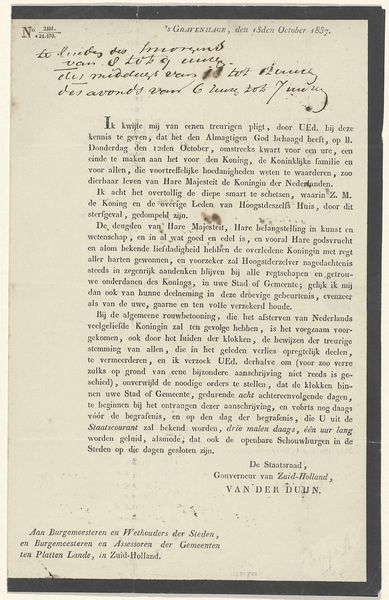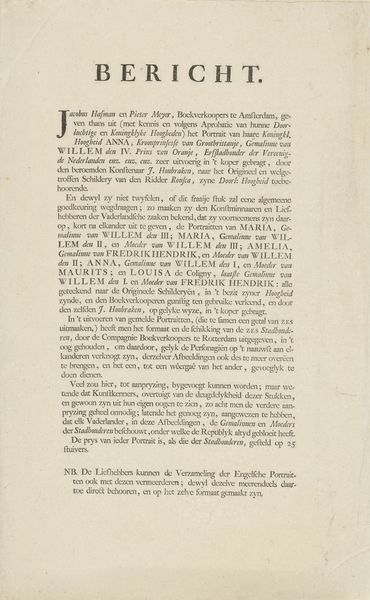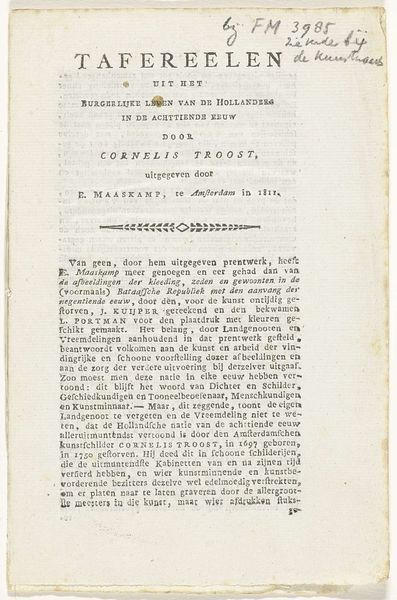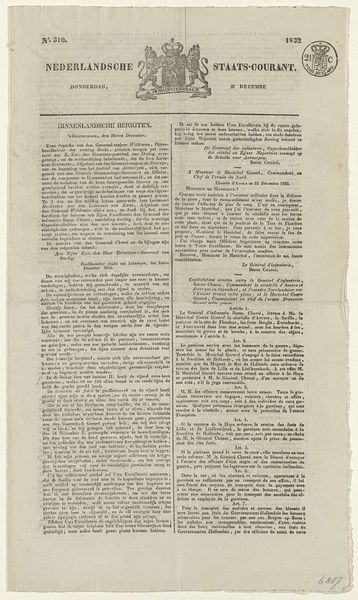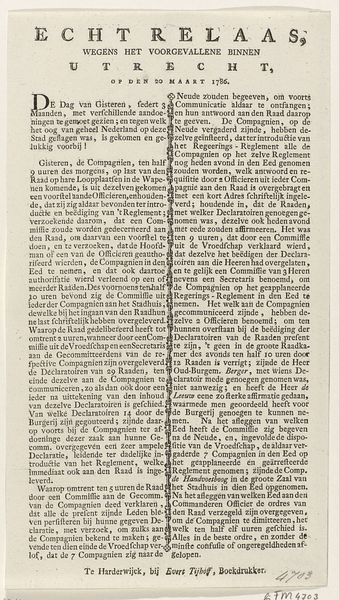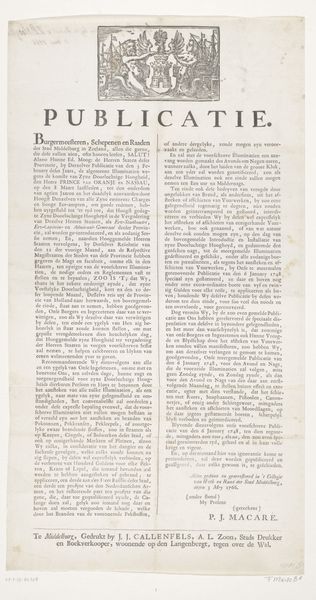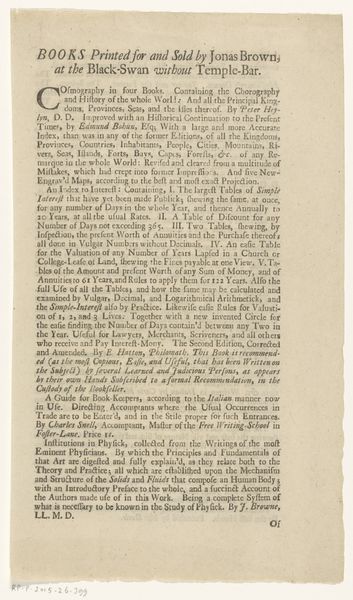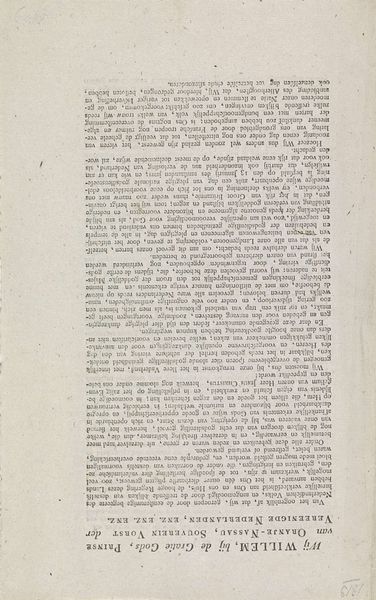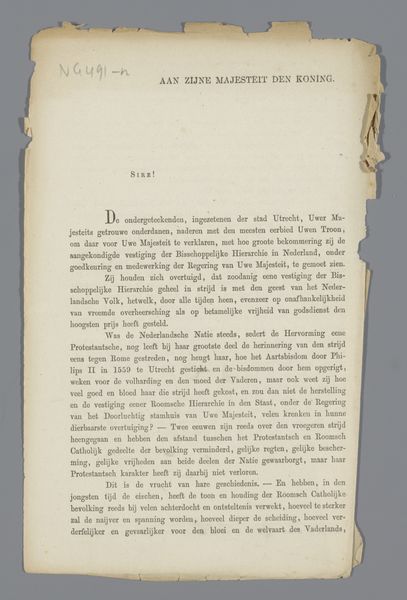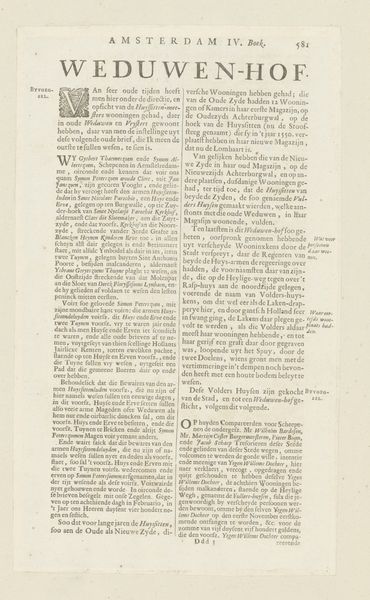
Officiële en naar waarheid opgenomen, berichten aan de Verschrikkelijken ramp, die de Stad en Vestiging Bergen op Zoom getroffen heeft...... 1831
0:00
0:00
print, paper
#
aged paper
#
newspaper
#
narrative-art
# print
#
paper
#
journal
#
romanticism
#
history-painting
Dimensions: length 34.3 cm, width 20 cm
Copyright: Rijks Museum: Open Domain
Editor: We’re looking at a printed paper titled "Officiële en naar waarheid opgenomen, berichten aan de Verschrikkelijke ramp, die de Stad en Vestiging Bergen op Zoom getroffen heeft..." made in 1831 by F.W. Beijer. The title roughly translates to "Official and truthfully recorded news of the terrible disaster that befell the City and Fortress of Bergen op Zoom." It’s… intense! The typography feels urgent and a bit overwhelming. What's your interpretation? Curator: Well, this isn't just typography; it’s a window into a community reeling from disaster. Think about what a printed broadside like this meant in 1831. It’s pre-photography, pre-radio. This sheet would have been one of the quickest ways to spread news. How do you think the visual density plays into its function? Editor: I suppose it mirrors the chaos and amount of information to be shared as quickly as possible... Curator: Precisely! Notice how dense the text is; columns crammed with information. Romanticism often grappled with intense emotions and historical events, and this is certainly doing so. Do you see any specific details that grab your attention amidst all the text? Editor: I see mentions of buildings damaged, and… something about helping people in hospitals? Curator: Yes! The text details damage to specific streets and a new Catholic church. And that hospital mention would probably refer to an improvised clinic to attend to the wounded. It paints a very vivid picture of the immediate aftermath. A raw and unfiltered account. I’m particularly drawn to the small scale of the human cost: injured artillery men, and lost children, for instance. Editor: It's amazing how such a simple object could contain so much about one historical moment. I never thought a document could say so much. Curator: Indeed. It makes you wonder what “disasters” will become captured in texts and prints today, in the age of internet and images!
Comments
No comments
Be the first to comment and join the conversation on the ultimate creative platform.
